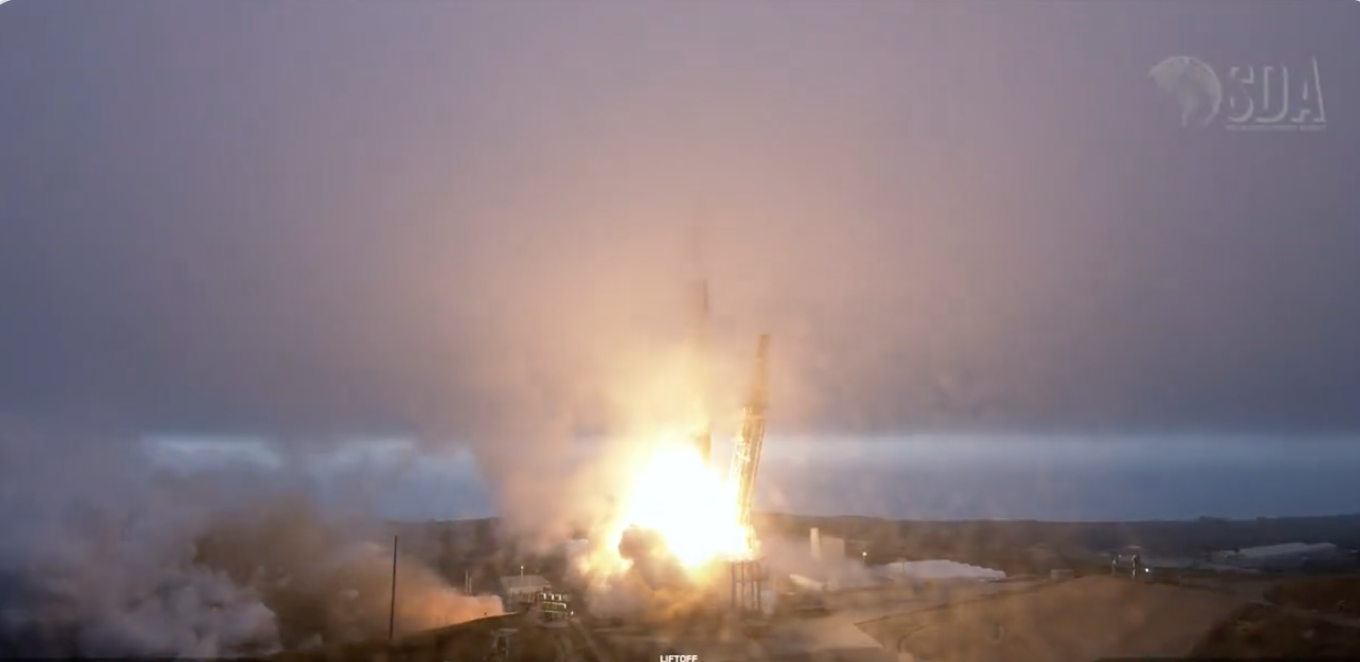WASHINGTON — A SpaceX Falcon 9 rocket lifted off April 2 at 10:29 a.m. Eastern from Launch Complex 4 East at Vandenberg Space Force Base, California, carrying 10 military satellites, including two built by SpaceX.
The mission to low Earth orbit is the first launch of a new military communications and missile tracking constellation built by the Space Development Agency (SDA), a U.S. Space Force organization created to accelerate the use of commercial space technologies in military systems.
SpaceX first attempted to launch this mission March 30 but the launch was aborted three seconds before liftoff. The company said the automatic abort was triggered by one of the first-stage engines.
The launch on Sunday was Tranche 0 of SDA’s proliferated low Earth orbit constellation. These were the first 10 of 28 data-transport and missile-tracking satellites that make up Tranche 0.
This was SpaceX’s 22nd launch of 2023. The first-stage booster for this mission had previously launched a batch of Starlink internet satellites.
After separating from the second stage about two and a half minutes into the flight, the booster performed three engine burns and returned to Landing Zone 4 at the launch site about eight minutes after liftoff. This was SpaceX’s 183rd successful recovery of a first-stage booster.
At SDA’s request, SpaceX did not provide views of the second stage or payload updates after booster separation.
The satellites are being placed into two orbital planes 1,000 kilometers above Earth.
This was the first of two dedicated launches to be performed by SpaceX under a December 2020 $150 million contract awarded by SDA for Tranche 0 satellites. The remaining 18 satellites are projected to launch in June.

The Tranche 0 mission launched on Sunday included eight data-transport satellites made by York Space Systems that will be part of a mesh communications network known as Transport Layer, and two infrared sensor satellites made by SpaceX and Leidos that detect and track missiles in flight. These will be part of the Tracking Layer.
The Tracking Layer is envisioned as a global network of eyes in the sky designed to provide a defense shield against Russian and Chinese ballistic and hypersonic missiles.
The data collected by missile-tracking satellites will be sent via optical links to the Transport Layer. That would ensure that if a missile threat is detected, its location and trajectory data can be transmitted securely through space and downlinked to military command centers.
A ‘proliferated architecture’
SDA plans to build a network of hundreds of interconnected satellites, an approach it calls a “proliferated architecture” relying on low-cost satellites in large numbers to deliver critical services. DoD typically has favored smaller constellations of costlier, more complex satellites.
To track hypersonic missiles in all phases of flight, DoD determined that satellites in low orbit 1,000 kilometers above Earth would be better positioned to see these targets, as opposed to the existing geostationary satellites stationed 37,000 kilometers above Earth.
Space Force leaders have endorsed the idea of a proliferated constellation as a more resilient option that would be harder for adversaries to disrupt during a conflict.
If China were to consider targeting U.S. satellites, “a proliferated constellation makes it a much tougher proposition for them to execute against,” said Chief of Space Operations Gen. B. Chance Saltzman.
“Satellite constellations must be proliferated, disaggregated and distributed,” he told lawmakers March 14. “The Space Development Agency’s proliferated warfighter space architecture provides a prime example of those efforts.”
